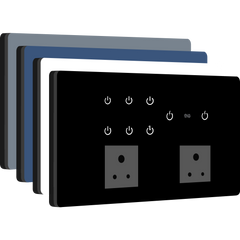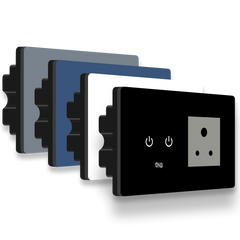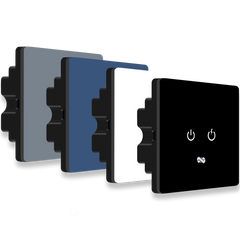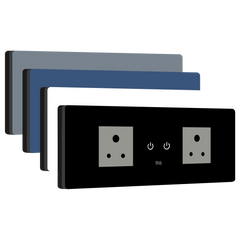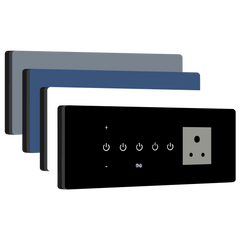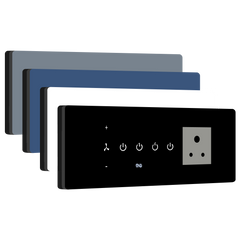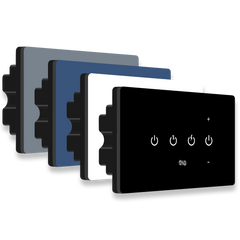Frequency Bands: Understanding How They Affect Your Smart Switches
1. Definition
Frequency bands refer to the range of electromagnetic frequencies within a specific band that are used to transmit data wirelessly. In the context of smart switches, frequency bands determine the speed, range andreliability of wireless communication between your smart devices.
These bands are typically divided into particular ranges, such as the 2.4 GHz and 5 GHz bands, which are commonly used for Wi-Fi and other smart home communications. Frequency bands are essential for ensuring your smart devices, including switches, function correctly within your home. They influence how well devices communicate with your router and other smart technology, as well as their overall performance regarding range and data transfer speed. Selecting the right frequency band can significantly improve performance and enhance connection reliability in your smart home setup.
2. Key Takeaways
-
Frequency bands are used for wireless data transmission and are essential to your smart switch’s connectivity.
-
2.4 GHz and 5 GHz are the most commonly used frequency bands for Wi-Fi-enabled smart switches.
-
2.4 GHz provides a longer range but slower data speeds, while 5 GHz offers faster speeds with a shorter range.
-
Choosing the appropriate frequency band enables faster communication, reduces interference andimproves overall performance.
-
Many modern smart devices, including switches, are dual-band – meaning they can operate on both 2.4 GHz and 5 GHz for optimal functionality.
3. Why Frequency Bands Matter for Smart Switches
Frequency bands play a key role in how smart switches perform andunderstanding their importance can help you optimise your home automation system.
Communication and Connectivity:
Smart switches communicate wirelessly with your home network and other smart devices, relying on frequency bands to transmit data. Understanding the bands your smart switch supports ensures it operates efficiently and avoids interruptions or underperformance.
Range and Coverage:
The frequency band affects how far the signal can travel while maintaining a stable connection. The 2.4 GHz band covers a broader area, enabling devices situated farther from the router to remain connected. By contrast, the 5 GHz band, while faster, has a more limited range and may struggle with connections at longer distances.
Speed and Performance:
The 5 GHz band offers higher data transfer speeds, which is advantageous for devices requiring more bandwidth, such as smart cameras or those used for high-speed streaming. Smart switches located close to the router can benefit from these higher speeds, ensuring quicker response times and more reliable operation.
Reduced Interference:
The 2.4 GHz band is often more crowded, as many household appliances like microwaves, baby monitors andBluetooth devices operate on it. The 5 GHz band, being less congested, generally provides a more stable and faster connection.
Dual-Band Smart Switches:
Many of today’s smart switches are dual-band, meaning they can switch between 2.4 GHz and 5 GHz bands depending on the router’s proximity or performance requirements. This flexibility ensures a smoother, more consistent experience across your smart home.
4. Example / Use Case
Imagine you have a dual-band smart switch installed in your living room. If your router is nearby, the smart switch will likely connect to the 5 GHz band, delivering faster responses and improved reliability for tasks like adjusting lighting or syncing with other smart devices. However, if the switch is farther from the router, it may automatically switch to the 2.4 GHz band to maintain a stable connection – sacrificing speed for range.
Another scenario might involve several smart switches spread across different rooms. Those closest to the router can leverage the 5 GHz band, while those further away can rely on the 2.4 GHz band for broader coverage. Thanks to dual-band capability, you can optimise performance in every room without compromise.
5. Frequently Asked Questions (FAQs)
What’s the difference between the 2.4 GHz and 5 GHz frequency bands?
The 2.4 GHz band has a wider range but lower speeds, whereas the 5 GHz band delivers faster speeds but has a shorter range. Both have their advantages and many smart devices support dual-band to get the best of both worlds.
Which frequency band is best for my smart switch?
It depends on your setup. If the switch is close to your router, the 5 GHz band is ideal for speed. If it's situated further away, the 2.4 GHz band is better for maintaining a strong connection.
Can I use both 2.4 GHz and 5 GHz simultaneously?
Yes, many modern routers and smart switches support dual-band functionality, allowing devices to use both frequency bands for better overall performance.
Why does my smart switch keep disconnecting?
Possible reasons include signal interference, a weak connection, or an overloaded 2.4 GHz band. Try relocating your router or connecting to the 5 GHz band if available.
Are all smart switches dual-band?
Not necessarily. Some only support 2.4 GHz. It's important to check the product specifications before purchasing to ensure it meets your needs.

